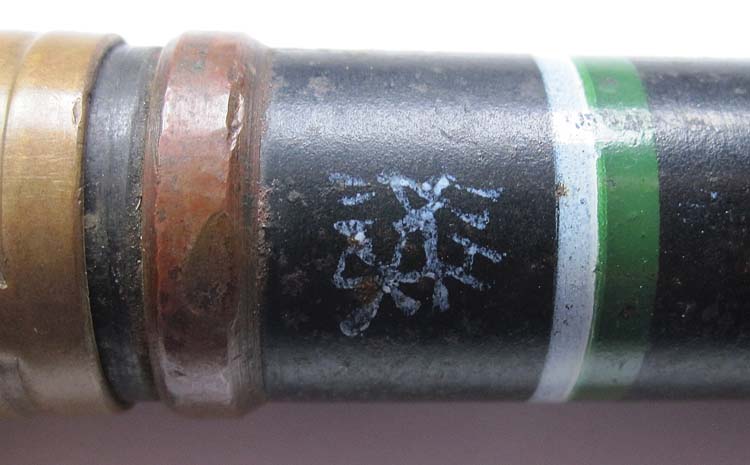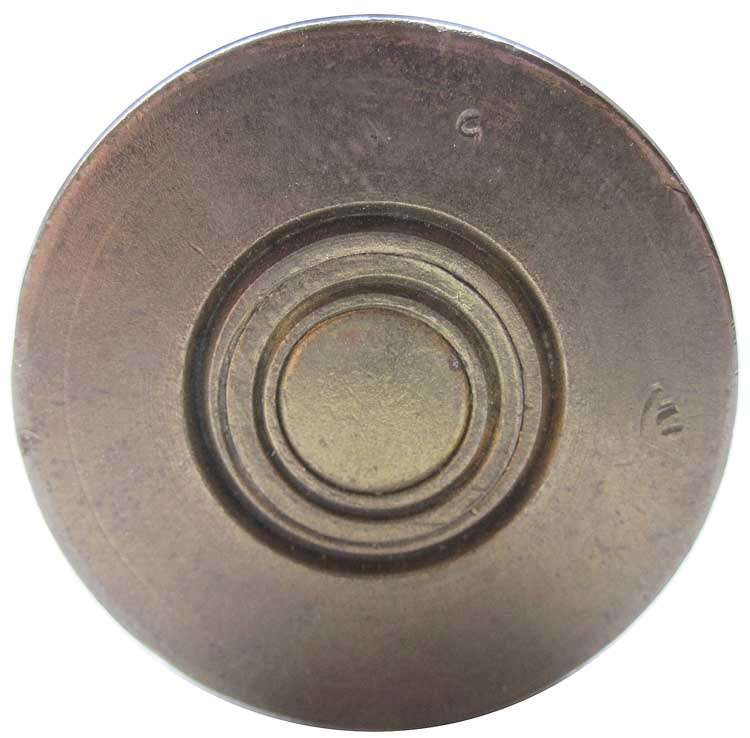Never let it be said that ordnance engineers won’t go to the most extreme measures to build a bigger implement of destruction for the common soldier to hump. Point in discussion is the “man-portable” Japanese Type 97 anti-tank, anti-material 20mm semi-automatic rifle conceived in the waning years of the 1930s.
Usually when an infantryman fires a rifle, he wants to be able to touch off a round without doing serious damage to himself. The hope is that the end with the hole in it will do more damage than the part that fits against the shoulder.
During the Second Sino-Japanese War and World War Two, the Empire of Japan, in the guise of the Imperial Japanese Army, saw a need to develop a weapon to be used primarily against the lightly-armored equipment being fielded by the Allies in the Pacific Theater. The Type 97 20mm anti-tank rifle was the end result. It had a semiautomatic action that was fed seven rounds from a top-mounted detachable box magazine. Rate of fire was said to be 12 rounds per minute, but that was seldom, if ever, achieved.
Total weight of the Type 97, when fitted with an armored shield, pushed the scales to near 150 pounds. A bipod and rear-mounted monopod aided in recoil control, but the Type 97 was not an optimal rifle to shoot. It took four Japanese soldiers to carry the gun, ammo and related equipment. Two troops were needed just to fire the Type 97, a loader and an operator. Some versions were fitted with handlebar-type cross bars to facilitate transporting.
The procedure was to locate the butt monopod on the ground, set the bipod mounted on the front of the action into the dirt, load the seven-round top-loading magazine, cock the action, sight the armored target, then touch off a round. Any combination of armor-piercing, tracer, ball, incendiary, self-destruct or practice projectile could be loaded in any order. It sat low to the ground and had a small blast signature compared to other 20mm rounds like the Hispano-Suiza 20mm x 110mm cannon.
A said above, total weight of the rifle and optional armor shield ran close to 150 pounds. However, even at that weight, recoil was extremely violent. The 20mm x 124mm round had a muzzle velocity of 2,460 feet per second. Muzzle energy was quite impressive. Ten feet from the muzzle a foot-pound reading in excess of 32,000 was recorded.
Interestingly, the Type 97 was initially designed to be fired from the operator’s shoulder. As the average Japanese soldier of 1941 weighed less than 150 pounds, this proved to be both dangerous and impractical. The recoil force was so fierce that firing the first shot caused the soldier to take some quick steps backwards. When fired from a prone position, heavy bruising was almost always guaranteed. Also, the recoil created so much pain that, even though the weapon was semiautomatic, follow-up shots were very slow in coming. A muzzle brake was fitted, but did little to tame the ferocious recoil. The Type 97 was designed in 1937; however, by 1942 the rifle was relegated to strictly a defense weapon.
The 20mm x 124mm round was capable of piercing up to 300 mm of armor at 250 yards, down to 200 mm at 700 yards. During the Pacific Campaign of World War II, the Type 97 was used against light tanks with moderate success, but once heavier tanks, like the M4 Sherman appeared on the battlefield, the Type 97 became a second echelon weapon, used mostly against half-tracks and Duce-and-a-half trucks.
The Japanese Army didn’t have a surplus of modern weapons, so rather than retiring the Type 97, they turned it into an emplaced weapon on islands like Gavutu, Tulagi and Tanambogo, where it was used against U.S. amphibious forces during the Solomon Island Campaign, May-August 1942.
Later in the war, the Japanese Imperial Army tried to increase the rifle’s anti-tank capability by adapting the Type 97 to launch grenades. The muzzle brake was removed and a grenade launcher cup was secured to the barrel by a locking bar. Somewhat successful, the idea was subsequently dropped when it was found that a standard Arisaka rifle could launch grenades as well as the heavy, complicated Type 97.

Simultaneously with the anti-armor use, the Type 97 was modified for aircraft use as the Ho-1. It was mounted in the dorsal turret of the Nakajima Ki-49 Donryu (Storm Dragon) twin-engine bomber.
Production of the Type 97 tapered off to a great extent when the Allied Eighth Air Force and Twentieth Air Force embarked on their urban renewal project on the Japanese home islands from late 1944 to end of war August 1945.
Type 97 20 MM Anti-tank Weapon
Designed
1937
Number manufactured
c. 400
Caliber
20mm x 124mm, seven round detachable magazine
Weight (traveling)
148 lb
Muzzle velocity
2,600 fps
Muzzle energy
32,000 ft-lb
Action
Gas operated semiautomatic
Barrel length
47.2 inches
Overall length
81.1 inches
Magazine capacity
Type 97 – 7 rounds; Ho-1 – 15 or 50 round double drum (depends on type of mount)


20 mm x 124 mm Ammunition
Type of projectile
Armor-piercing, tracer, incendiary, high explosive, inert, self-destruct
Projectile weight
High explosive, incendiary – 4.5 ounce; Armor-piercing, tracer – 5.7 ounce
Range
1,000 yards
Rate of fire
Theoretical – 400 rounds per minute (rpm); actual – 2-3 rpm
| This article first appeared in Small Arms Review V14N2 (November 2010) |











